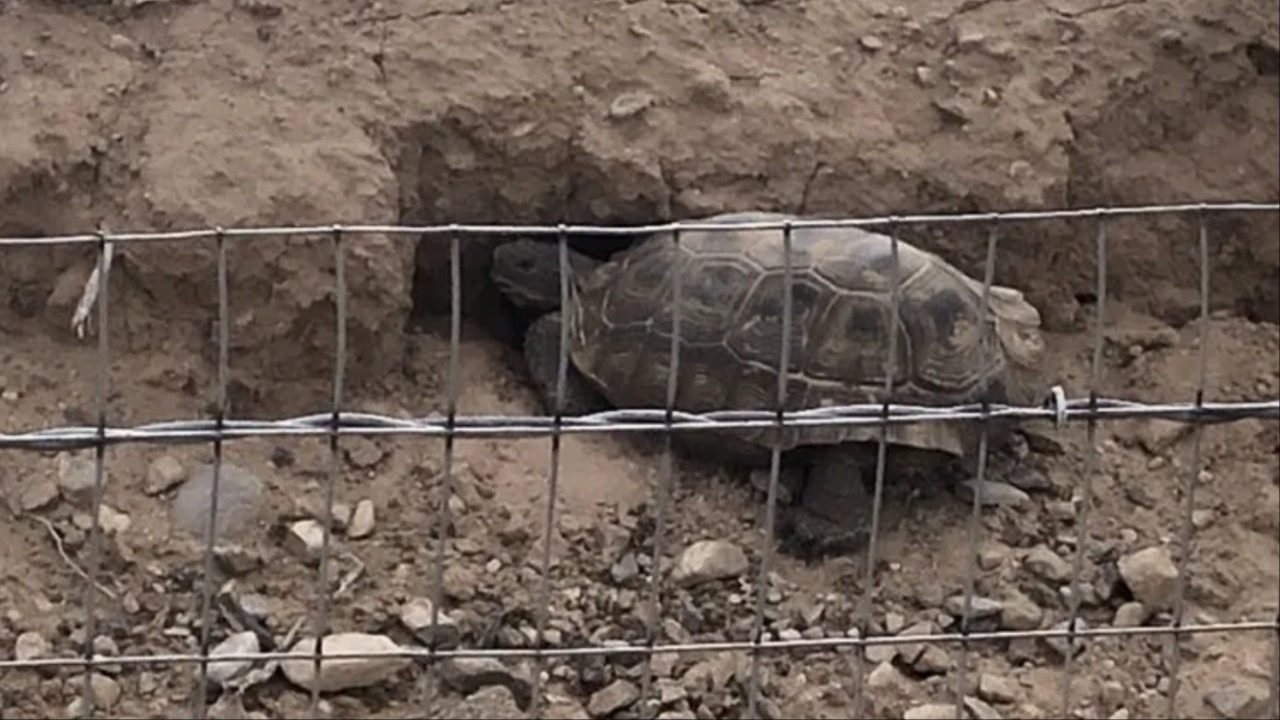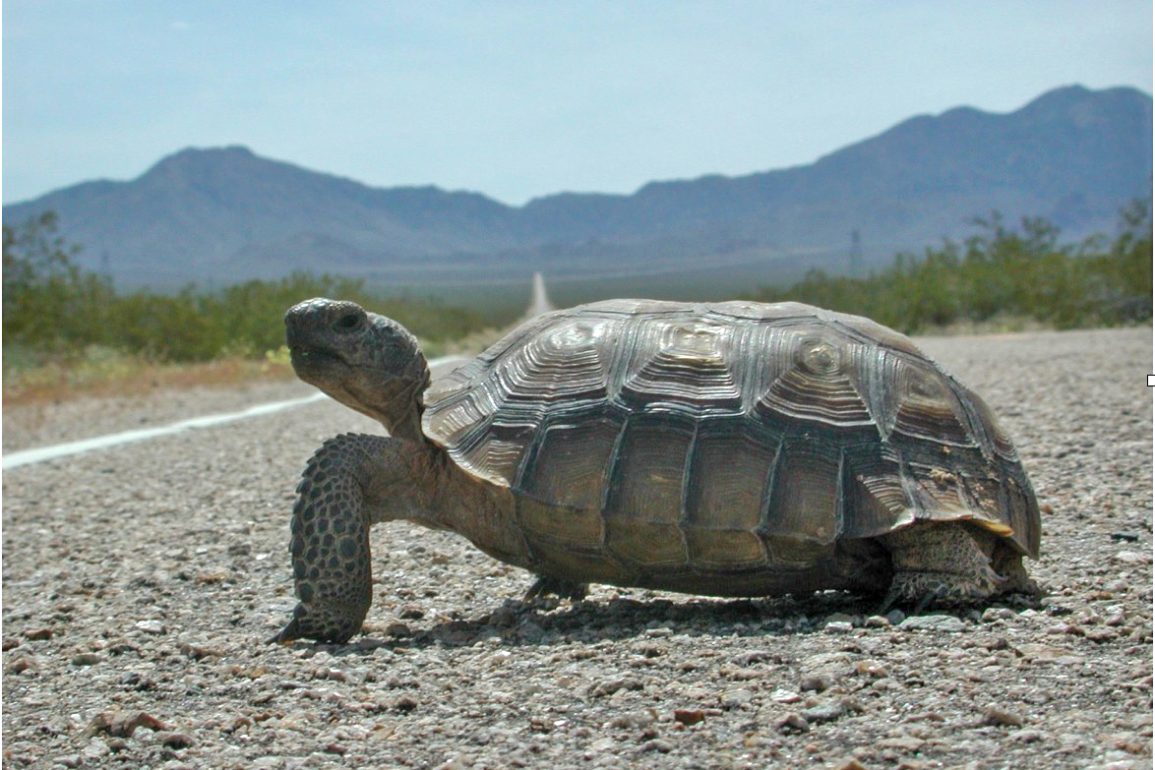The desert tortoise, a resilient reptile known to live up to 80 years, is a native of the Mojave National Preserve, spanning desert valleys across California and the American Southwest. As the preserve itself celebrates three decades of existence, many tortoises there are already well into middle age. However, their survival has been increasingly challenged by human encroachment, particularly road traffic, which has become a significant threat to these slow-moving animals.
To address this issue, the Mojave National Preserve has embarked on a $1 million project to install “tortoise fencing” along its busiest roads. This fencing, made from 2-foot-tall metal barriers, is designed to prevent tortoises from venturing onto roads where they risk being struck by vehicles.
The preserve’s tortoise population has dwindled so severely over the past 40 years that the species was added to the Endangered Species List in 1990 and is now classified as “threatened,” meaning it could soon become endangered without significant conservation efforts.
Currently, only about 10,000 tortoises are estimated to remain within the Mojave National Preserve, a number that has plummeted compared to the density observed in the 1970s, which was about 200 to 250 per square mile. By contrast, today’s estimates suggest just three tortoises per square mile.
To counter this sharp decline, the preserve has initially installed 10 miles of fencing and plans to add another 50 to 60 miles by 2025. This expanded fencing is targeted toward high-traffic areas where vehicle collisions pose the greatest threat to tortoises, especially during mating season in autumn when the animals are more active.
Funding for the fencing initiative was partly provided through a collaboration with local highway agencies and the federal government’s Infrastructure Investment and Jobs Act of 2022, which allocated substantial resources for new infrastructure projects.

Costing $20 per foot, the fencing project represents a significant financial commitment and is the first large-scale attempt by the preserve to reduce tortoise mortality on roads. Although previous efforts have included driver alerts, educational campaigns, and law enforcement measures, these have had limited impact due to persistent challenges in raising public awareness about wildlife conservation.
Other human-related factors are also contributing to the tortoises’ decline. Increased visitation has provided food sources and nesting sites for ravens, whose population has risen drastically in recent years. These birds pose a direct threat to juvenile tortoises with softer shells, making them vulnerable to predation. Invasive species like wild burros further exacerbate the situation by overgrazing on vegetation essential to the desert tortoises’ habitat, thereby degrading the land that tortoises rely on to survive.
Beyond the fencing, the Mojave National Preserve runs the Ivanpah Desert Tortoise Research Facility, where juvenile tortoises are raised past their most vulnerable stages to improve their survival rates. Each young tortoise must be nurtured for up to a decade until its shell hardens, making every mature tortoise saved from threats like road traffic crucial to population stability.
Though the fencing might slightly hinder tortoises’ mating patterns, the benefit of reducing road fatalities outweighs this drawback. Moreover, as ecosystem engineers, tortoises play a critical role in maintaining the desert’s biodiversity by creating burrows that provide shelter for other species, underscoring the essential nature of their conservation.

